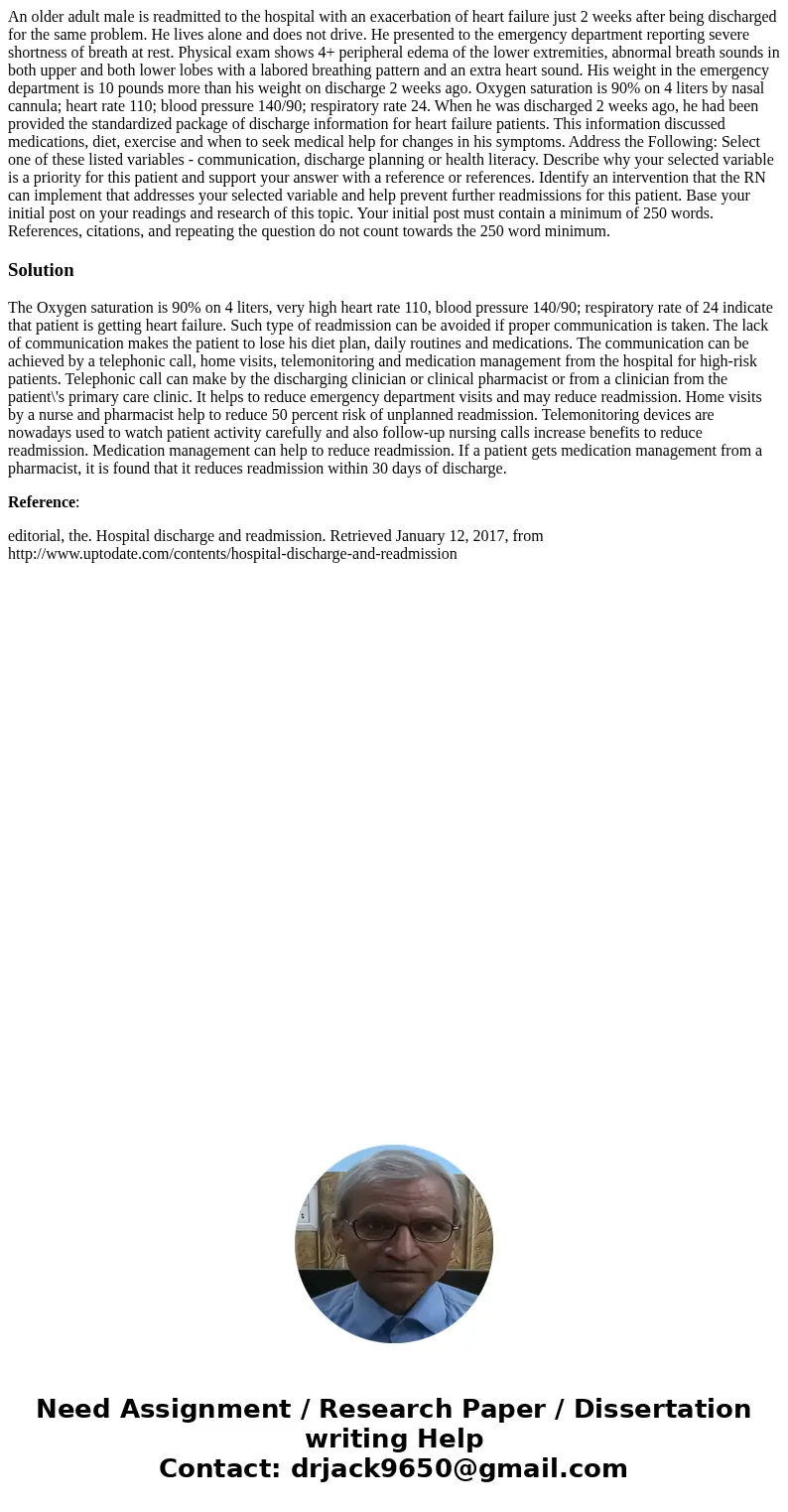An older adult male is readmitted to the hospital with an ex
An older adult male is readmitted to the hospital with an exacerbation of heart failure just 2 weeks after being discharged for the same problem. He lives alone and does not drive. He presented to the emergency department reporting severe shortness of breath at rest. Physical exam shows 4+ peripheral edema of the lower extremities, abnormal breath sounds in both upper and both lower lobes with a labored breathing pattern and an extra heart sound. His weight in the emergency department is 10 pounds more than his weight on discharge 2 weeks ago. Oxygen saturation is 90% on 4 liters by nasal cannula; heart rate 110; blood pressure 140/90; respiratory rate 24. When he was discharged 2 weeks ago, he had been provided the standardized package of discharge information for heart failure patients. This information discussed medications, diet, exercise and when to seek medical help for changes in his symptoms. Address the Following: Select one of these listed variables - communication, discharge planning or health literacy. Describe why your selected variable is a priority for this patient and support your answer with a reference or references. Identify an intervention that the RN can implement that addresses your selected variable and help prevent further readmissions for this patient. Base your initial post on your readings and research of this topic. Your initial post must contain a minimum of 250 words. References, citations, and repeating the question do not count towards the 250 word minimum.
Solution
The Oxygen saturation is 90% on 4 liters, very high heart rate 110, blood pressure 140/90; respiratory rate of 24 indicate that patient is getting heart failure. Such type of readmission can be avoided if proper communication is taken. The lack of communication makes the patient to lose his diet plan, daily routines and medications. The communication can be achieved by a telephonic call, home visits, telemonitoring and medication management from the hospital for high-risk patients. Telephonic call can make by the discharging clinician or clinical pharmacist or from a clinician from the patient\'s primary care clinic. It helps to reduce emergency department visits and may reduce readmission. Home visits by a nurse and pharmacist help to reduce 50 percent risk of unplanned readmission. Telemonitoring devices are nowadays used to watch patient activity carefully and also follow-up nursing calls increase benefits to reduce readmission. Medication management can help to reduce readmission. If a patient gets medication management from a pharmacist, it is found that it reduces readmission within 30 days of discharge.
Reference:
editorial, the. Hospital discharge and readmission. Retrieved January 12, 2017, from http://www.uptodate.com/contents/hospital-discharge-and-readmission

 Homework Sourse
Homework Sourse